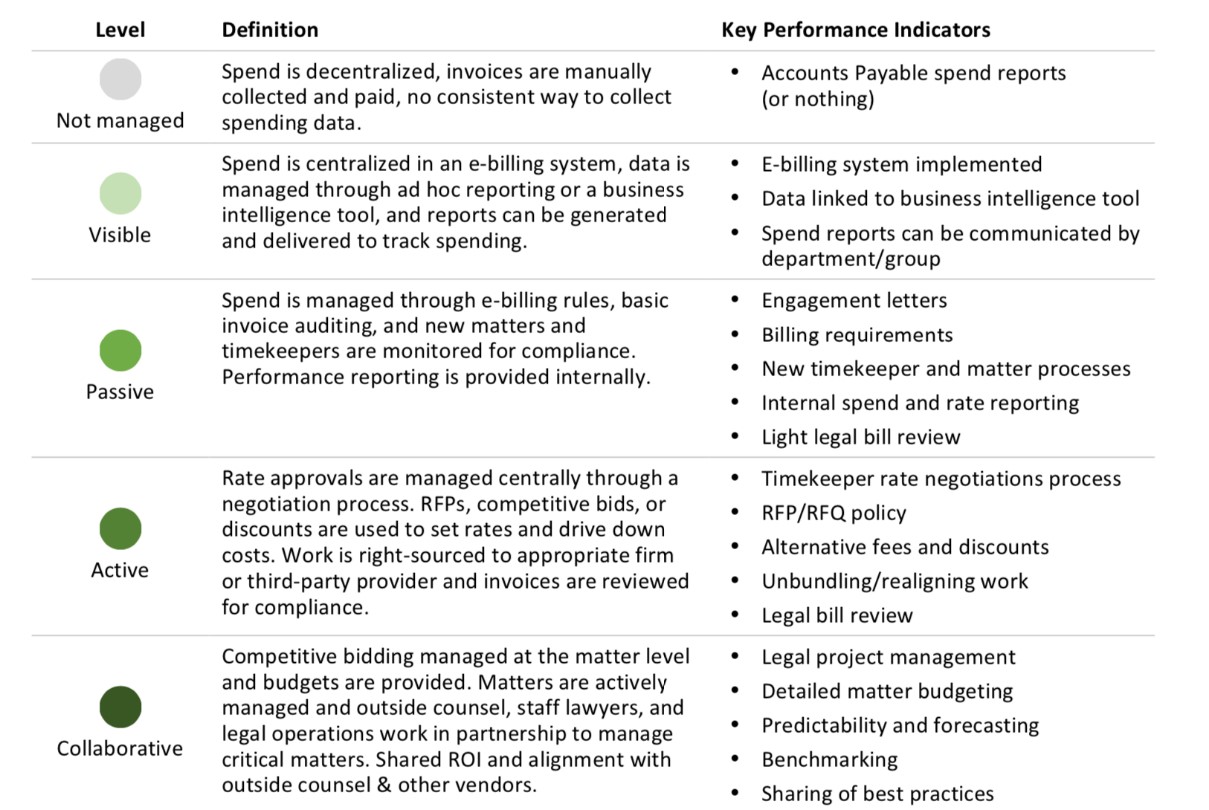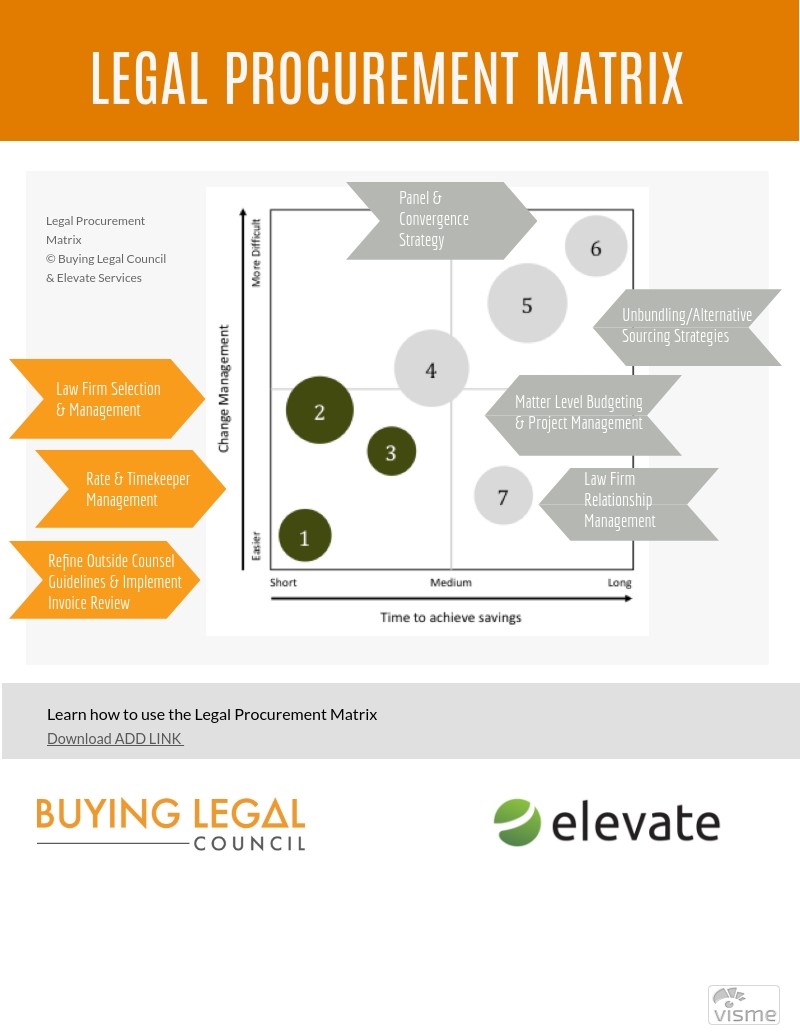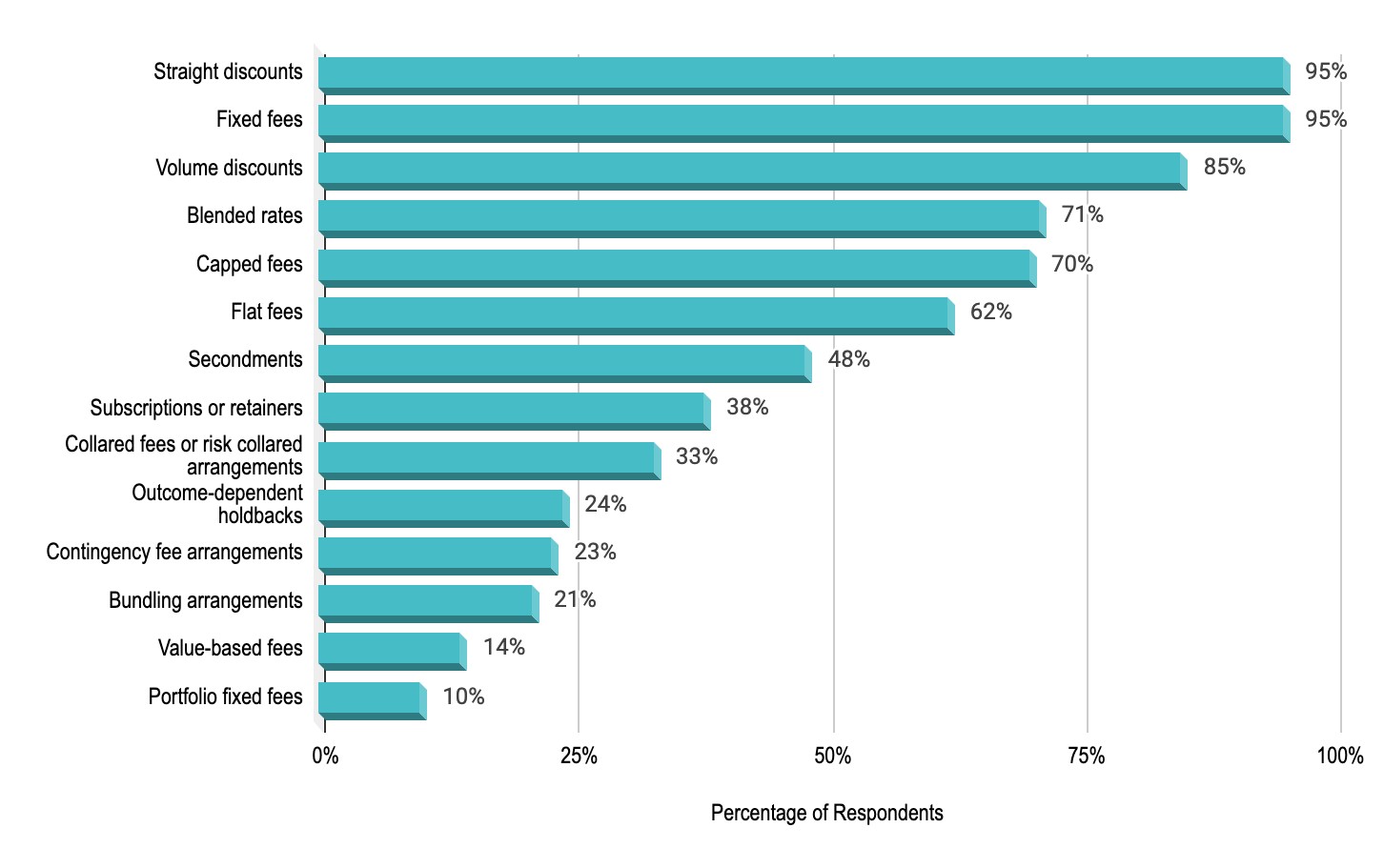The Quick Guide To Buying Legal Services
---
Dr. Silvia Hodges Silverstein has written a guide to help buyers of legal services
During the last few years, an increasing number of procurement professionals have gotten involved in buying legal services. These ‘legal procurement’ professionals use a procurement approach for legal services and aim to drive value and competitive advantage for their employers beyond merely cutting cost.
This article is a selection from the just published Quick Guide to Buying Legal Services. We wrote the Guide to help buyers of legal services – in-house lawyers, legal operations, legal procurement – and is based on research by the Buying Legal® Council, the international trade organization and only dedicated source of education and research for professionals tasked with sourcing legal services and managing supplier relationships.
GET LEGAL SPEND UNDER MANAGEMENT
One of legal procurement’s main tasks is to support the legal department manage external spend. Since more and more organizations now require legal departments to establish and adhere to budgets, an “active” management approach with outside counsel is needed to ensure policies and procedures are followed and benefits and savings are realized. “Collaborative” management goes even further and includes developing shared accountability between outside counsel and in-house lawyers to deliver innovative solutions.
Exhibit 1 shows the different maturity levels of legal spend under management with their associated Key Performance Indicators (KPI). Use this model to assess where your organization is currently situated. Identify tools and performance indicators to implement and to progressively get more legal spend under professional management.

Exhibit 1. Legal Spend Under Management Maturity Levels
(Source: Buying Legal® Council/Elevate)
Your organization can use different legal spend management initiatives to achieve cost savings, specific performance benefits, and have different time horizons. The Legal Spend Management Matrix in Exhibit 2 maps initiatives to help prioritize your activities:
• Time to Achieve Benefits (X-axis): Strategies in the left quadrants typically realize benefits more quickly than strategies in the right quadrants.
• Change Management Requirements (Y-axis): Strategies in the bottom quadrants tend to be easier to deploy – either technically or politically – than strategies in the top quadrants.
• Benefit Opportunity (Bubble size): Larger bubbles show strategies that are more likely to deliver greater cost savings than strategies indicated by smaller bubbles.

Exhibit 2. Legal Spend Management Matrix
(Buying Legal® Council/Elevate)
A legal department that requires fast cost control might select projects in the bottom-left quadrant, while an organization looking for sustainable benefits across a longer time horizon might consider projects in the top right quadrant.
It is not necessary to implement legal spend management initiatives in the numbered sequence. When designing a strategic program, begin with both short and long-term work streams to realize the benefits both quickly and consistently.
BENCHMARK YOURSELF
Legal spend
Legal spend comprises of legal department staffing costs, outside counsel spend as well as regulatory fines and penalties. According to data by the Association of Corporate Counsel, total legal spend as a percentage of company revenue ranges from 0.4 to 2.3 percent. Keep in mind that highly regulated industries like banks, insurance companies, pharmaceutical companies tend to spend on the upper end of this range, significantly more than similar-sized companies in other industries.
BENCHMARK YOURSELF: What does your organization spend on legal services, annually, globally? Do not forget to include legal services that are not part of the legal department’s budget, but come directly out of budgets of different business units.
Savings
Procurement professionals are often measured on their ability to reduce spending. The Buying Legal® Council 2020 survey findings suggest that on average, legal procurement professionals are able to save their organizations 17 percent of the total legal spend. A majority of organizations has formal savings definitions, calculations and reporting methodologies in place, i.e. documented in writing and approved by a relevant body in their organization.
BENCHMARK YOURSELF: Set a baseline for spending and measure what your organization is able to save due to your involvement.
Legal Spend Management Tools
Negotiating discounts is the most commonly used legal spend management tool today. Almost no clients pay law firms’ “sticker” price. Other commonly used tools include:
• Alternative Fee Arrangements
• eBilling
• Outside counsel guidelines (OCG)
• RFPs
• Data analytics (spend and cost analyses)
• Freezing rates (i.e. not allowing automatic annual rate increases)
• Panels of preferred provider firms
• Matter-level hiring via RFPs
• Pre-matter scoping of work
• Developing sourcing criteria and purchasing strategies
• Invoice audits
• Legal project management
• eAuctions
Be aware that just because a tool is frequently used, it still may not be considered the most effective tool. According to recent Buying Legal® Council research, legal procurement professionals see the following as the top ten most effective legal spend management tools:
1. Issuing and enforcing outside counsel guidelines
2. Conducting data analytics (spend and cost analytics)
3. Requiring eBilling
4. Establishing a panel (preferred list of vendors)
5. Issuing RFPs
6. Negotiating AFAs (not discounts)
7. Pre-matter scoping of work
8. Conducting invoice audits
9. Developing sourcing criteria and purchasing strategies
10. Negotiating discounts
BENCHMARK YOURSELF: Which tools does your organization use when buying legal services? Which might you want to consider using?
Fee arrangements
Procurement is frequently tasked with negotiating fees for legal services. Fee arrangements for legal services come in three categories and can be applied to an entire matter, distinct stages of a matter, or across a group of matters: Hourly-based models, Fixed/flat fee models, and Value base models.
According to research by the Buying Legal® Council, the most frequently used fee arrangement models are:

Exhibit 3. Most Frequently Used Fee Arrangement Models
(Buying Legal® Council)
In the last decade, clients have increasingly insisted on non-hourly pricing, often referred to “alternative” fee arrangements (AFAs). Most corporate law firms are very familiar with AFAs.
BENCHMARK YOURSELF: Which fee arrangements does your organization have in place? Which worked well –and why? Which didn’t work well –and why?
For further information and access to legal spend management tools, please check out the Buying Legal® Council Toolbox
Related links
Main menu



